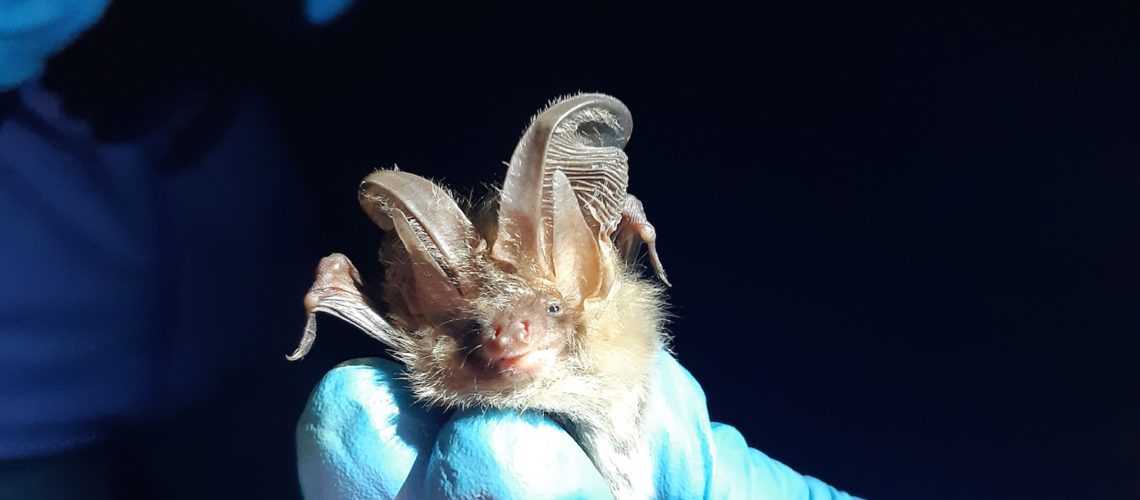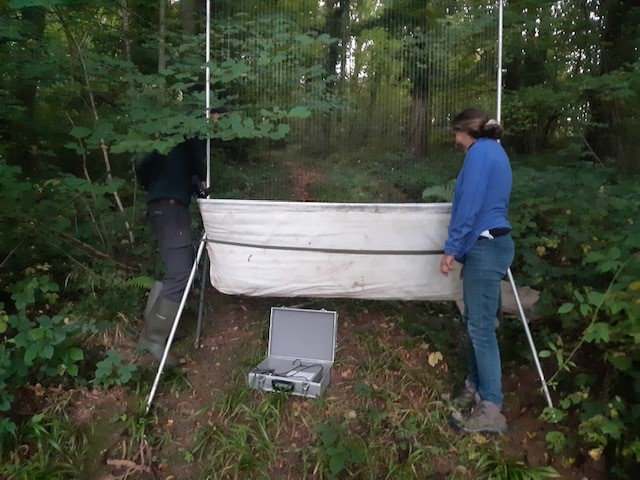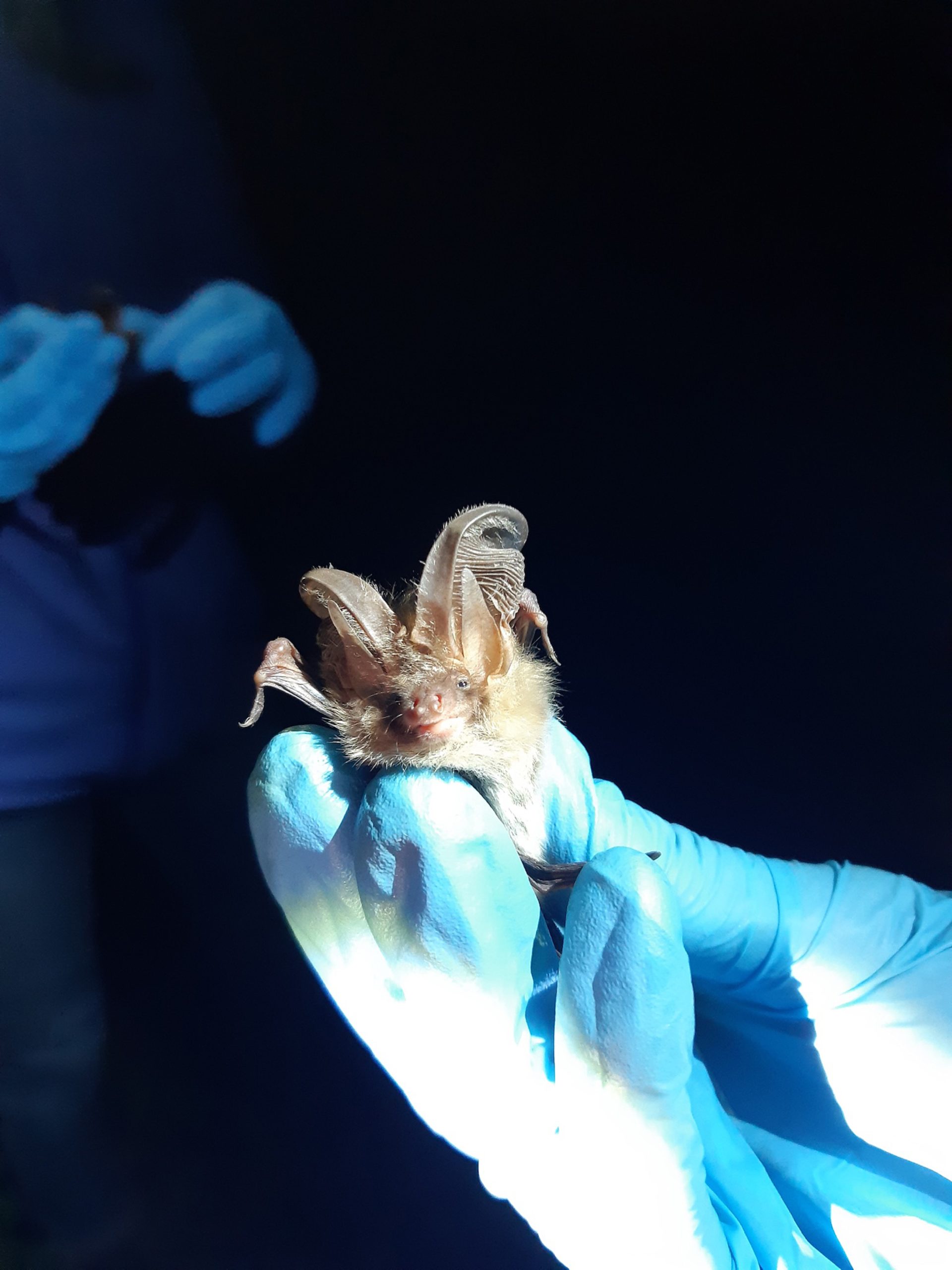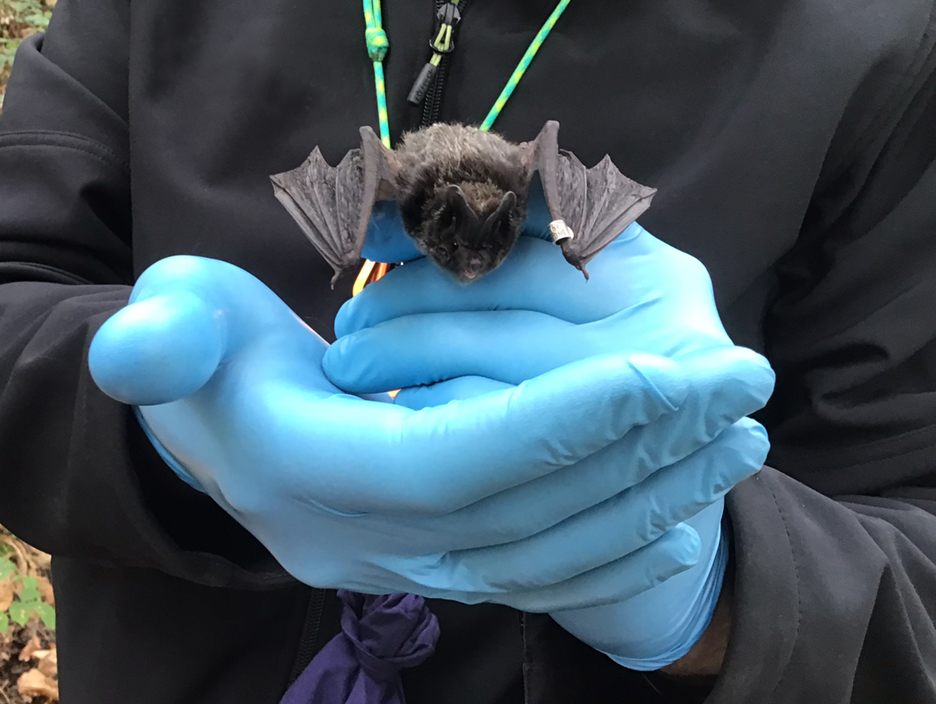
How volunteering helped Andrew Lewis move into a new job
My name is Andrew, and I am a volunteer with Vincent Wildlife Trust. Some years ago, I completed a degree in Environmental Studies with the intention of changing career from engineering into the environmental and ecology sector. However, a large element of ‘career inertia’ led to this move being shelved, a vague intention to be perhaps followed up on in the future…
Having taken time to reflect on where I wanted to go career-wise during Covid lockdown I made the decision that it was ‘now or never’ and started to study in earnest towards my goal of a new career in ecological consultancy. I soon discovered that while studying towards that goal was all well and good, field experience is invaluable and so I made contact with VWT about any volunteer opportunities. It was perhaps one of the most important contacts I have ever made.
Lara Semple, the temporary volunteer co-ordinator, suggested several opportunities to get involved in the surveying of lesser horseshoe bats around the Monmouth and Brecon areas and within a few weeks, bat detector in hand, I found myself on a small track outside a disused chapel, counting lesser horseshoe bats under the expert guidance of Dee, the volunteer lead for the count. The first night we counted 30 bats emerging, and the excitement of seeing them really is indescribable.
The first signs of activity were around dusk, with bats coming near the roost entrance, but not quite ready to come out (known as light sampling) before the first makes its move and leaves the roost. Then the counting starts – but beware! These bats have no consideration for the poor old surveyor, and think nothing of leaving the roost, just to dive back in before you quite know what is happening! I left the roost that night excited to have taken part in the count and seeing my first lesser horseshoe bats, as well as having learned a couple of important lessons – wrap up warm when you’re spending the evening on a Welsh hillside, and take a camping chair!
Over the next few weeks, I took part in four more emergence surveys across Monmouthshire and Powys, and each time I was able to benefit from the experience of survey leads – Dee, Sue and Marina (my thanks to you all!), and to count with increasing confidence. I was also able to gain invaluable experience in the use of Infra-Red cameras and BatLogger bat detectors as aids to counting, skills that I have found extremely useful in my new career.
In early August 2022, Lara contacted me again to see if I was interested in helping with some trapping of barbastelle bats in the Golden Valley area of Herefordshire. Naturally I jumped at the chance, and so for two evenings in mid-August I found myself assisting VWT staff: Patrick Wright (Senior Scientific Officer), Marina Palacios (Senior Bat Conservation Officer) and Lizzie Croose (Senior Carnivore Conservation Officer) in setting up triple-high mist nets and harp traps across likely foraging routes in the hope that a few barbastelles would grace us with their presence.

Setting up mist nets and harp traps: ©Andrew Lewis
The setting up of the nets was hard work but good experience. We settled into a routine of checking the nets and traps, returning to base and having a quick chat about the fascination of bats. Unfortunately, the barbastelles decided not to bother, but happily a couple of brown long-eared bats filled in for them. I must admit, I felt too inexperienced to handle the bats for more than a moment – terrified of harming something that looked so small and fragile – but even that time felt extremely special, and it was wonderful to see them fly off after having their ‘vital statistics’ recorded by the team.

Brown long-eared bat: ©Andrew Lewis
As the season was coming towards the end, I was looking for some experience in checking bat boxes, and so one Saturday morning at the end of September I joined Tom Kitching (Senior bat Conservation Officer) on the Malvern Hills to check around 110 bat boxes for barbastelle bats. Having checked around 100 boxes, with only one common pipistrelle found, and with the weather beginning to take a turn for the worse, it looked like we were going to strike out as far as barbastelles were concerned. However, Tom informed me that it was common to find a lot of boxes empty, and then find one box stuffed full of bats. And so it was to be!
Towards the end of our sweep of the woodland, in what I like to think of as the 101st box we checked, Tom said he thought we had a bat or two. And so he took down the box, handed me some bat bags to hang around my neck, and proceeded to take bats out of the box. In the end we had ten barbastelles in that one box.
The bats were taken from the box one by one, examined, weighed, sexed and put into the bat bags before all being returned to the bat box, which was then put back in its position on the tree, safe and sound. The morning was hard work, but thoroughly worth it. The chance to see barbastelles close up is one that many people never get to experience, and I feel privileged to have had the opportunity.

Barbastelle: ©Andrew Lewis
I am now working as an Ecological Consultant, and this is in no small part due to the experience I gained in volunteering with VWT. Work allowing, I hope to carry on volunteering again this coming season, and maybe will feel a little more confident in handling bats, should the opportunity arise. In the meantime, I am extremely grateful to Marina, Patrick, Tom, Lizzie, Lara, Dee, Sue and Rowena for passing on their knowledge and experience during my great times volunteering with VWT.
Andrew Lewis, VWT Volunteer
Main photo: Brown long-eared bat ©Andrew Lewis